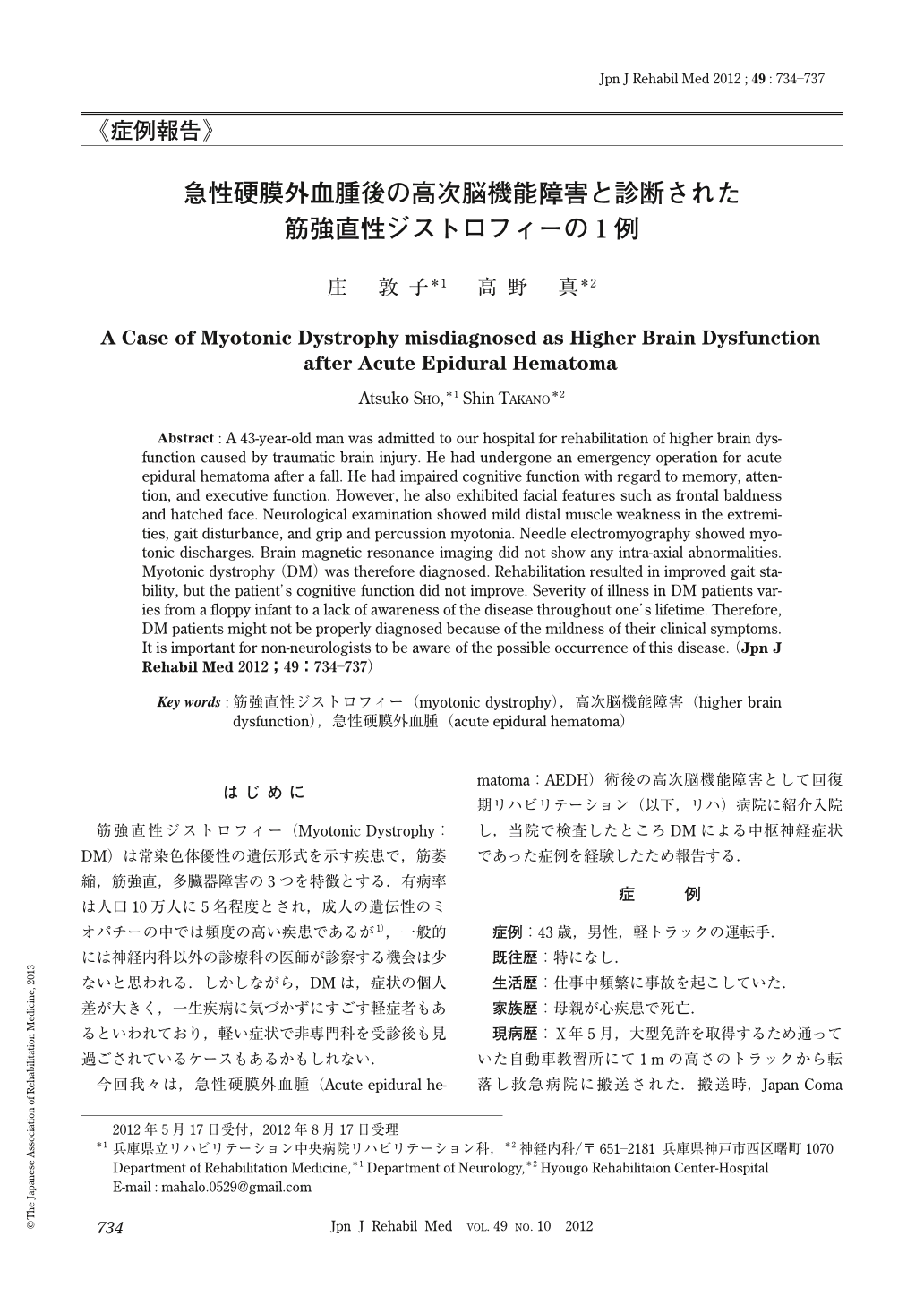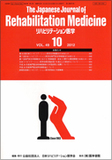Japanese
English
- 販売していません
- Abstract 文献概要
- 1ページ目 Look Inside
- 参考文献 Reference
はじめに
筋強直性ジストロフィー(Myotonic Dystrophy:DM)は常染色体優性の遺伝形式を示す疾患で,筋萎縮,筋強直,多臓器障害の3つを特徴とする.有病率は人口10万人に5名程度とされ,成人の遺伝性のミオパチーの中では頻度の高い疾患であるが1),一般的には神経内科以外の診療科の医師が診察する機会は少ないと思われる.しかしながら,DMは,症状の個人差が大きく,一生疾病に気づかずにすごす軽症者もあるといわれており,軽い症状で非専門科を受診後も見過ごされているケースもあるかもしれない.
今回我々は,急性硬膜外血腫(Acute epidural hematoma:AEDH)術後の高次脳機能障害として回復期リハビリテーション(以下,リハ)病院に紹介入院し,当院で検査したところDMによる中枢神経症状であった症例を経験したため報告する.
Abstract : A 43-year-old man was admitted to our hospital for rehabilitation of higher brain dysfunction caused by traumatic brain injury. He had undergone an emergency operation for acute epidural hematoma after a fall. He had impaired cognitive function with regard to memory, attention, and executive function. However, he also exhibited facial features such as frontal baldness and hatched face. Neurological examination showed mild distal muscle weakness in the extremities, gait disturbance, and grip and percussion myotonia. Needle electromyography showed myotonic discharges. Brain magnetic resonance imaging did not show any intra-axial abnormalities. Myotonic dystrophy (DM) was therefore diagnosed. Rehabilitation resulted in improved gait stability, but the patient's cognitive function did not improve. Severity of illness in DM patients varies from a floppy infant to a lack of awareness of the disease throughout one's lifetime. Therefore, DM patients might not be properly diagnosed because of the mildness of their clinical symptoms. It is important for non-neurologists to be aware of the possible occurrence of this disease.

Copyright © 2012, The Japanese Association of Rehabilitation Medicine. All rights reserved.


